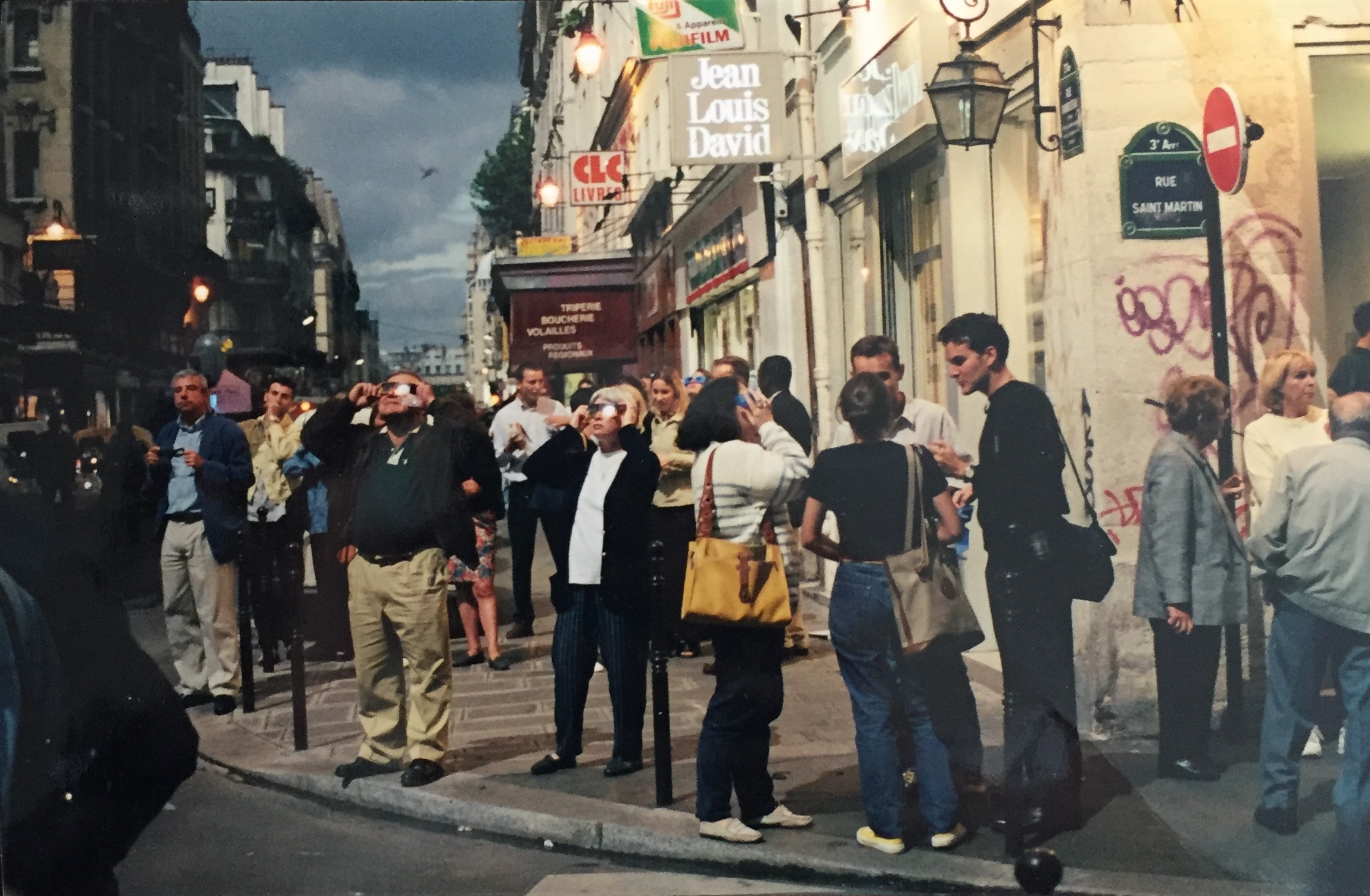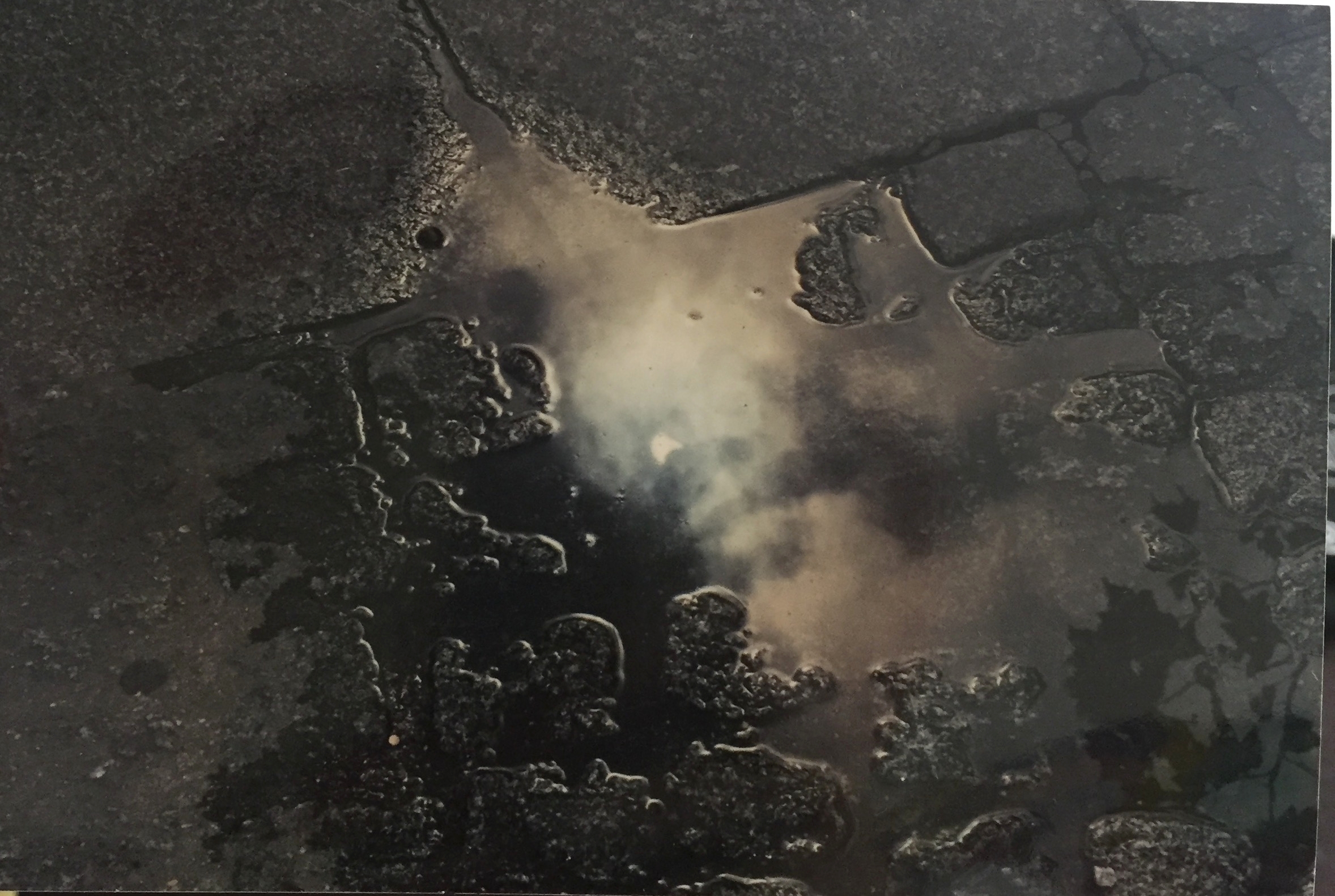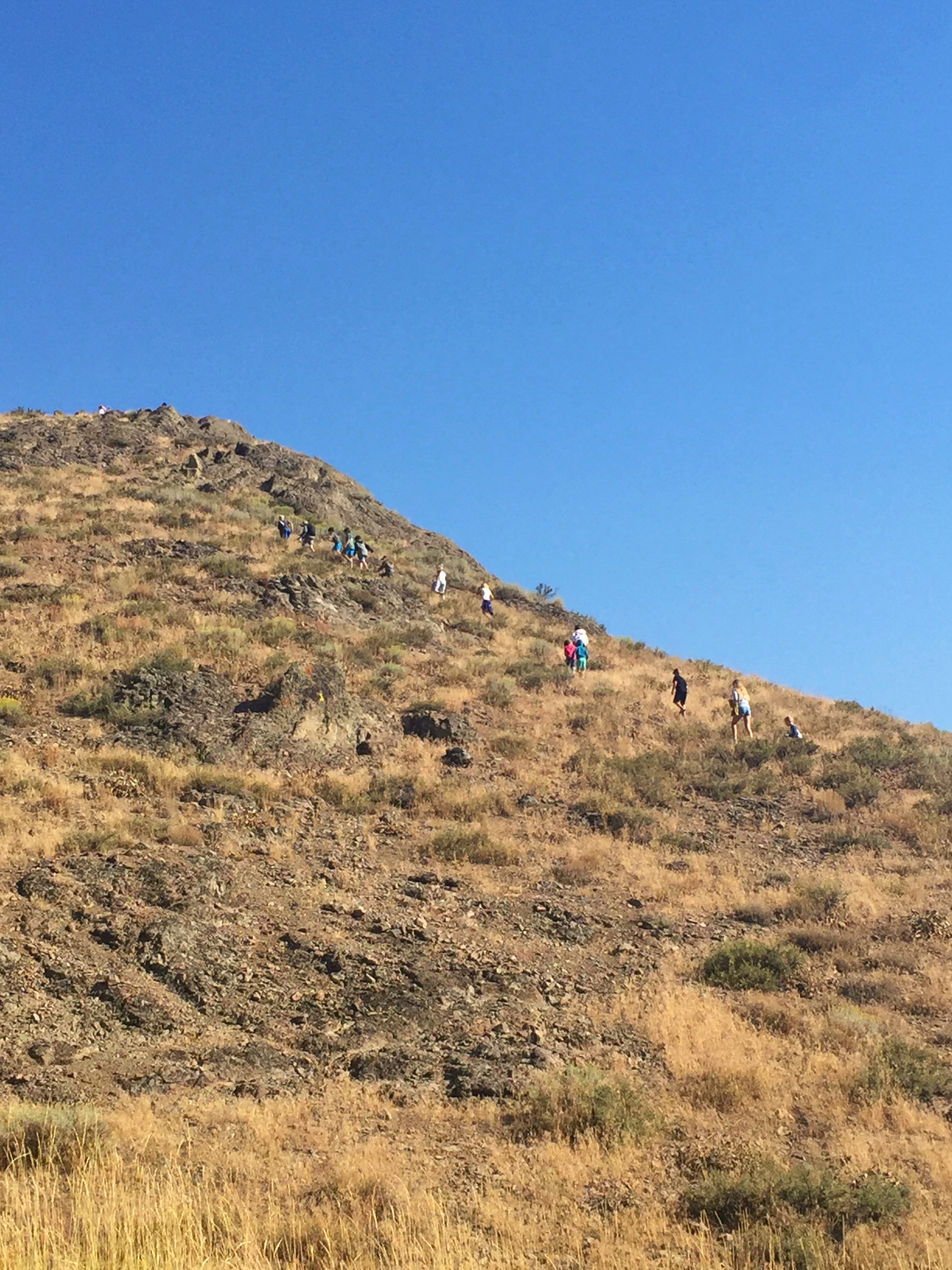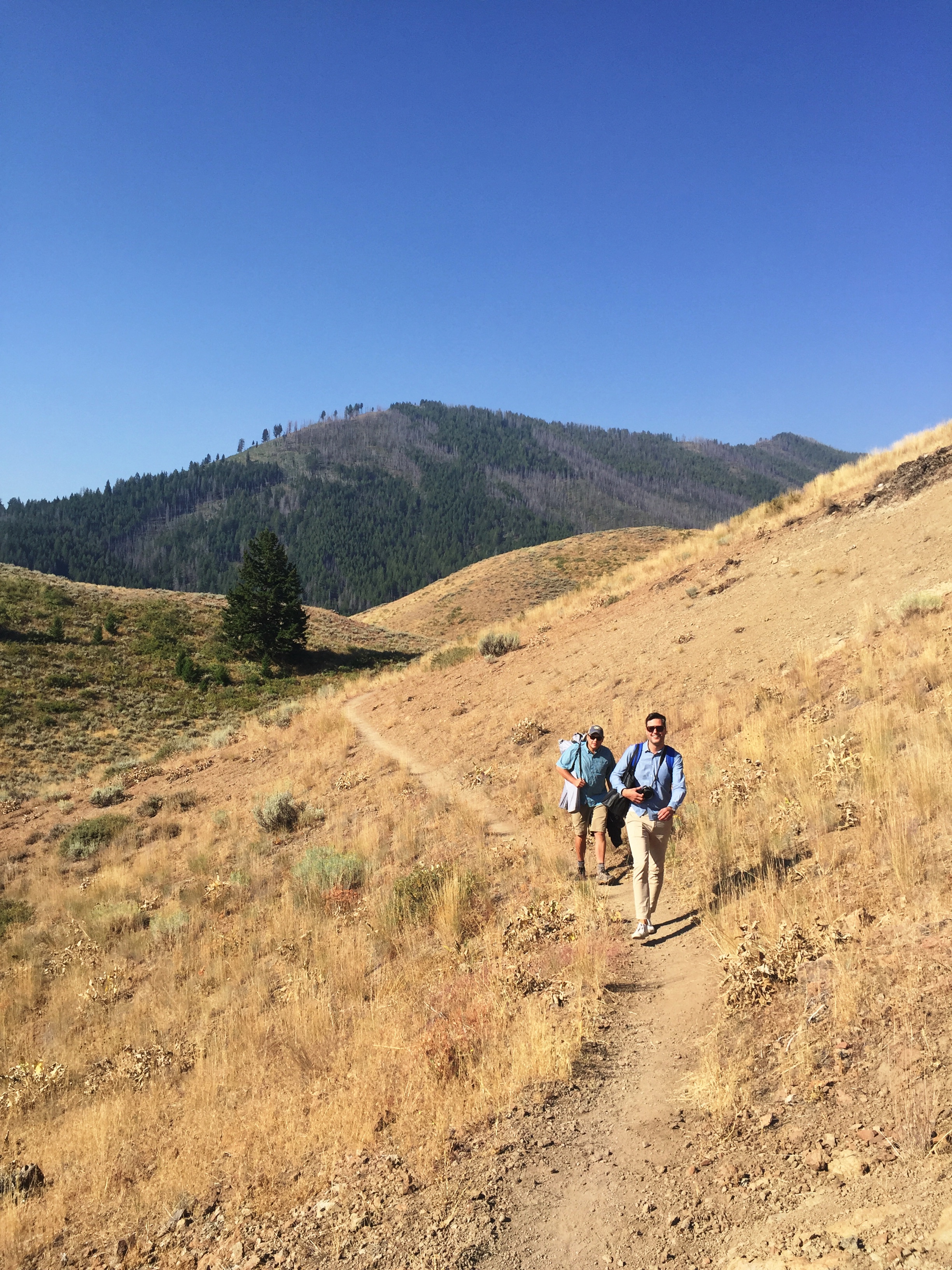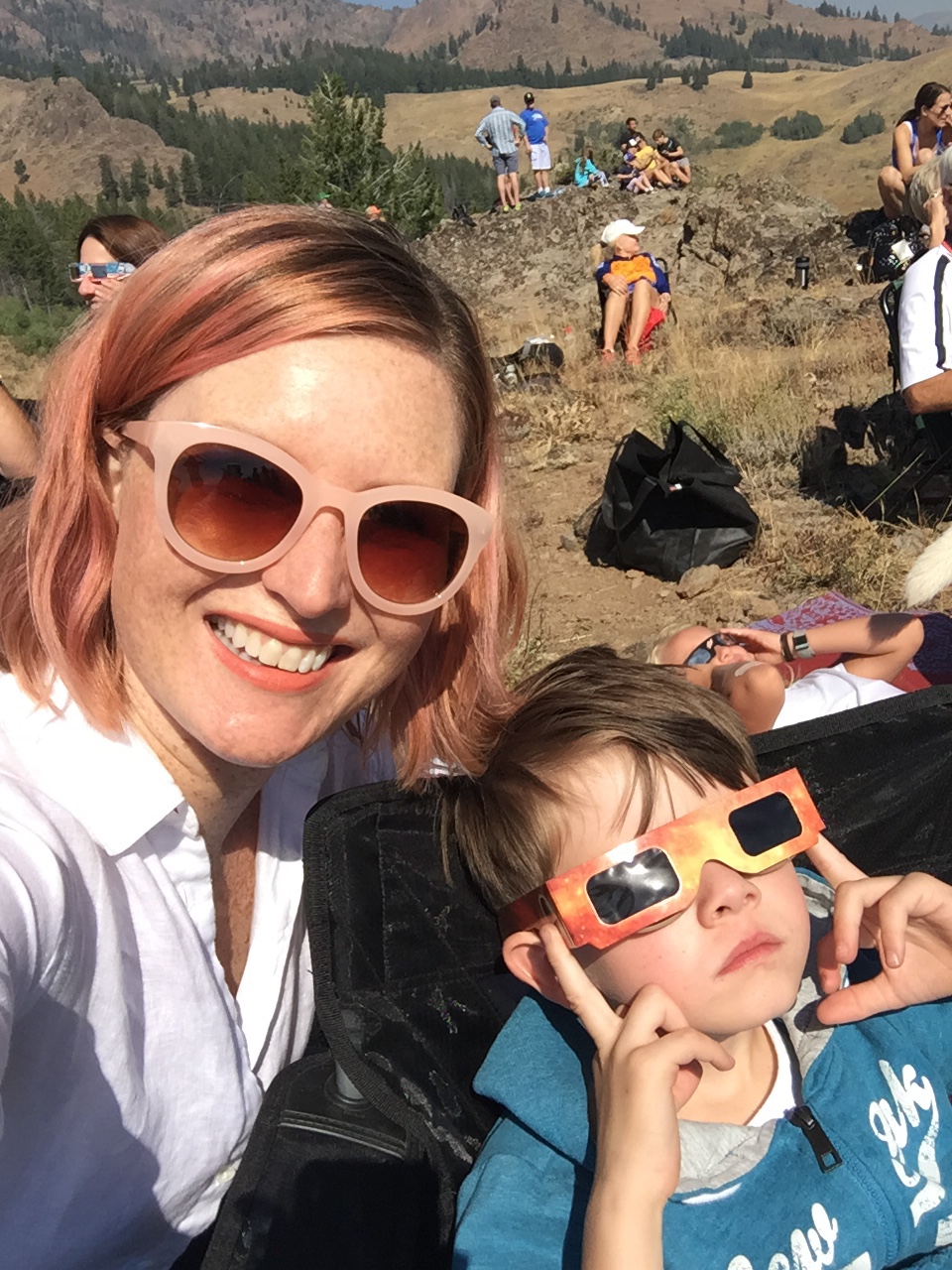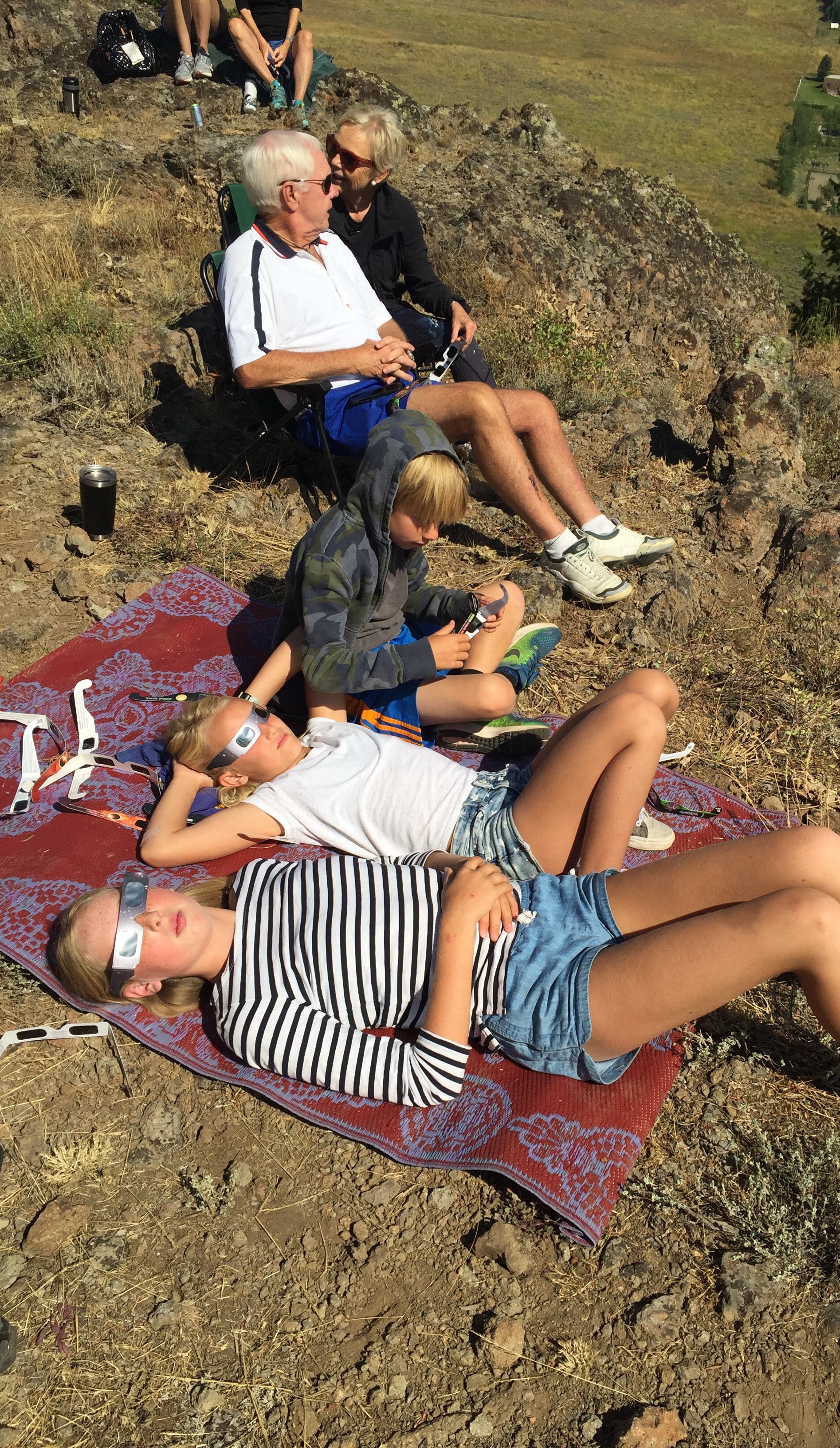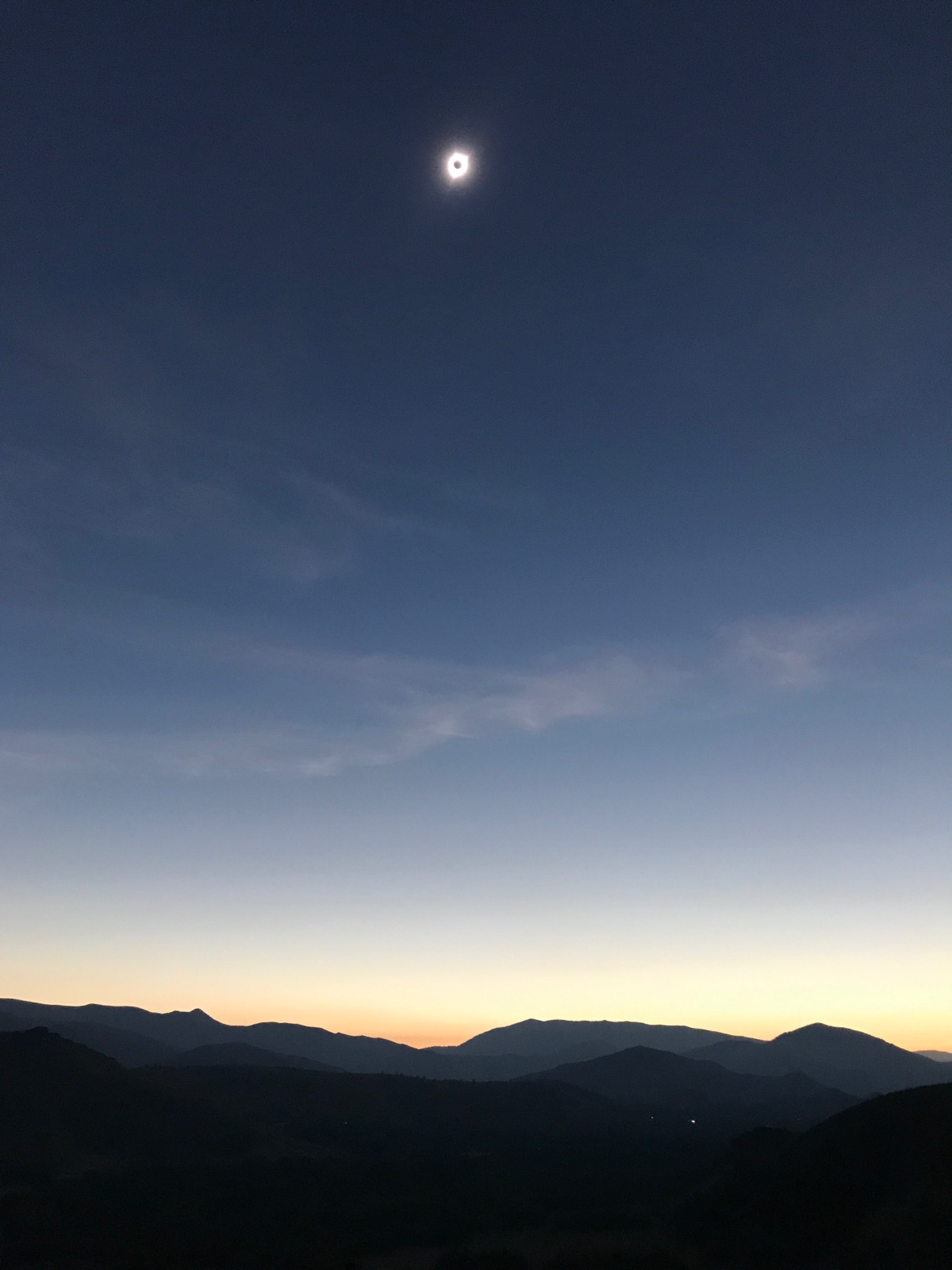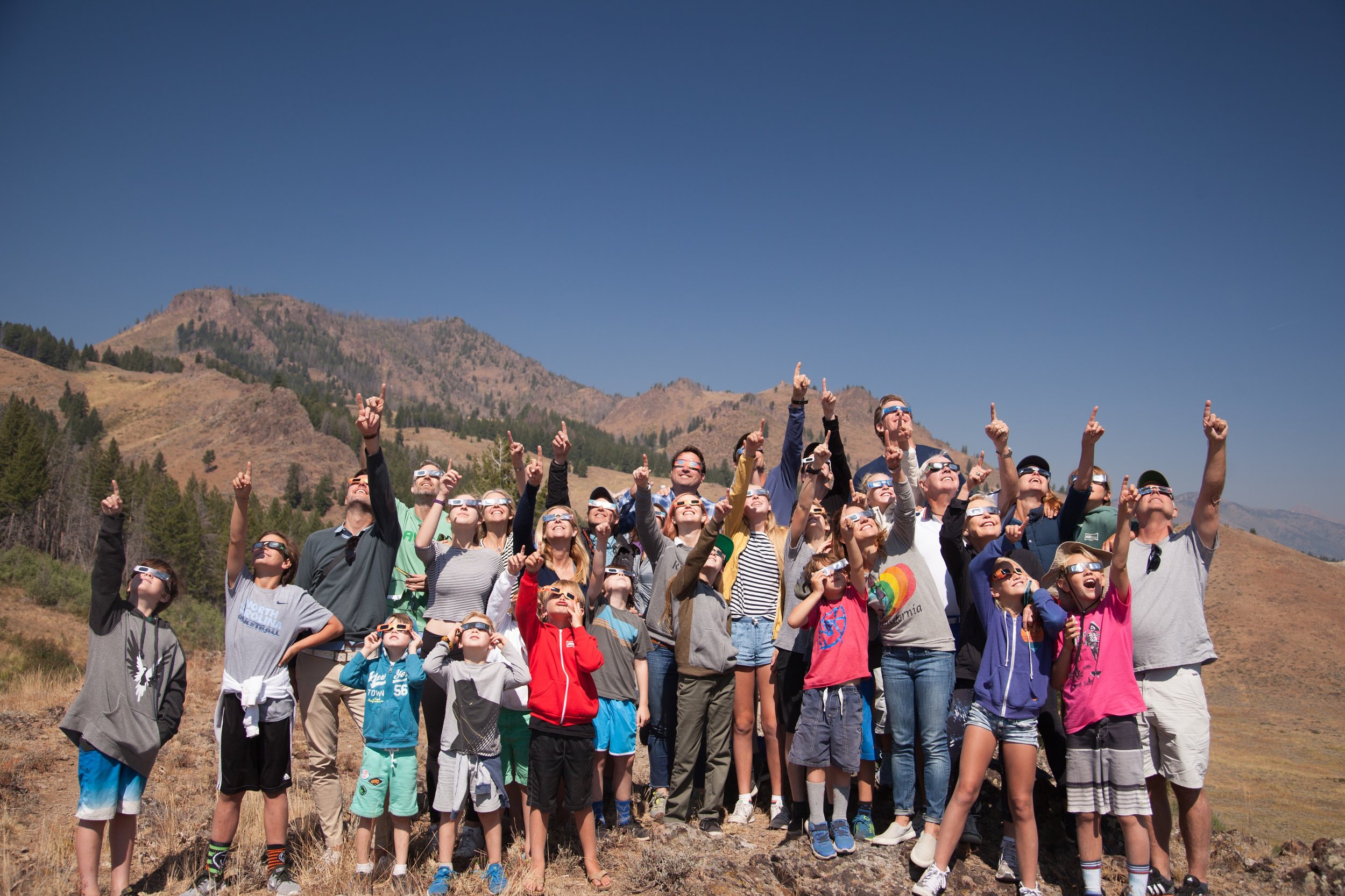The Solar Eclipse was an important event this summer, it was hard to escape. Every magazine, newspaper, or local tv show was talking about it and the fanfare leading up to it. I had never seen a total one, only a partial one and that was cool enough for me to want to see more. It was August 1999 and I was in Paris with my family on summer holiday. I remember it was raining that day, as it often does in Paris. We were in the Marais and everyone came out of the shops and bistros and was just standing in the streets, gawking at the sky. Since you can't look at the sun directly, I took a picture of the reflection of the eclipse in one of the rain puddles on the ground. This was back when you took pictures on a camera and waited weeks to develop them, unsure if you would actually get the image you wanted to take, with no second chances.
Partial solar eclipse in the Marais. Paris, August 11, 1999.
Marlborough girls are exceptional women: Class of '92, '94 and 2021. Photo by Matthew Clark.
My husband, who grew up in Paris, set out on a week long bike trip to the countryside of France with his uncle, father and cousins to see the total eclipse, unencumbered by all the lights, noises and pollution of the city. He enjoyed it so much and has talked about it many times over the years, so he began preparations for our trip about nine months prior and was really anxious that we had to be in just the right spot. Over the course of 1 hour and 32 minutes, the Great American Solar Eclipse would move from west to east in a path of totality across 14 states before ending near Charleston, South Carolina. We were originally going to go to Oregon, the longest of the totality and the initial starting off point, but that booked up too quickly and even a motel 6 there was $1000 a night! Next we looked at Nashville, to stay with friends, when that fell through we debated Nebraska. My mom is originally from there and we thought it might be interesting for Dries to experience some real Americana. We decided on Sun Valley, Idaho, a close family friend had moved there a few years back and had just moved into a house with plenty of room for all.
Hiking up the mountain to see the eclipse in Hulen meadows Sun Valley, Idaho.
After much anticipation, the day of the eclipse arrived and we were ready for it! We packed picnic blankets, chairs, warm sweaters (the temperature dropped about 20 degrees within minutes) and festive drinks and snacks along with our all important eclipse viewing glasses. We hiked up through the meadow and up a nearby mountain to enjoy an impressive view of the total eclipse. If you need to brush up on your astronomy, a total eclipse is when the moon lines up with the sun and Earth, briefly blocking the sun and creating a momentary impressive darkness. Only the sun's radiant atmosphere (known as the corona) can be seen during this short time.
Selfie time! Dries is focusing on the partial eclipse phase that lasted over an hour. Eclipse sun bathing
Approximately 71.45 miles at its widest point, totality lasts longer towards the center of the path, so the closer you are to the center line of the moon's shadow, the more time you'll have to experience. I spoke with some other eclipsers who were closer to the center of the path in nearby Stanley and they saw over 2 minutes of totality. The longest duration of totality was in Carbondale, Illinois with 2 minutes 40 seconds! In Hulen meadows, we were just at the edge of totality, with the partial phase beginning at 10:12:39 AM, and totality beginning at 11:29:38 AM for a duration of 1 minute 4 seconds.
Temperatures dropped fast, Dries and Ashley watching the partial eclipse. Photo by Matthew Clark.
Of course, we have mother nature to thank for this total unobstructed view. After a preliminary meteorological report predicted clouds, we were fortunate enough to have perfect weather. Not everyone was that lucky. My sister went to Nashville and right at the moment of totality, a big cloud moved in the way and partially blocked the view! Thankfully not the whole time but for at least half. There was another eclipser at our vantage point that told us that this was his 12th total eclipse trip with only 2 actual sightings due to tempermental weather conditions. Now that's dedication.
Total Eclipse photo by Ryan Gates.
A total eclipse is truly something special to behold. There were around 30 of us, several families, dogs, kids, grandparents up on the mountain all experiencing this cosmic event together. The magic lies in that for a few minutes, everyone stops what they're doing and looks up to the sky to marvel at the beauty of nature, remembering that there is more than just us. Forgetting about the negativity we are bombarded with on a daily basis and instead reveling in this ethereal, transient beauty. Providing the hope for a mental shift or transfer of energy as it passes and our routine lives resume. To possibly be kinder to one another or just a little more patient. To be present in the moment and thankful for the limited time we have here on this planet and with each other. To be with family and friends at this significant moment in time, creating an enduring memory to cherish.
Group photo by Matthew Clark.
According to NASA, since 1503, there have been 15 total solar eclipse paths that have crossed the path of this Great American Solar Eclipse. The next total solar eclipse that will cross the US will be in 2024, crossing south to north. Time to start making travel plans!


